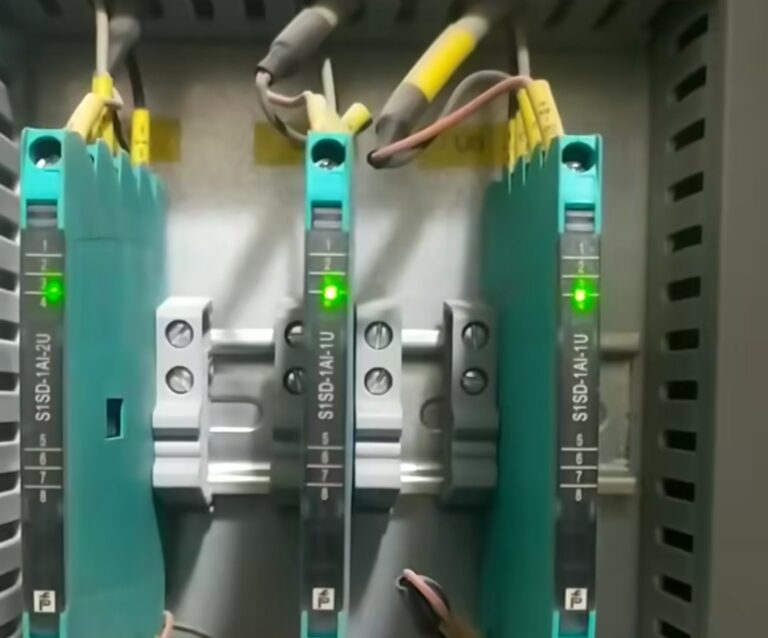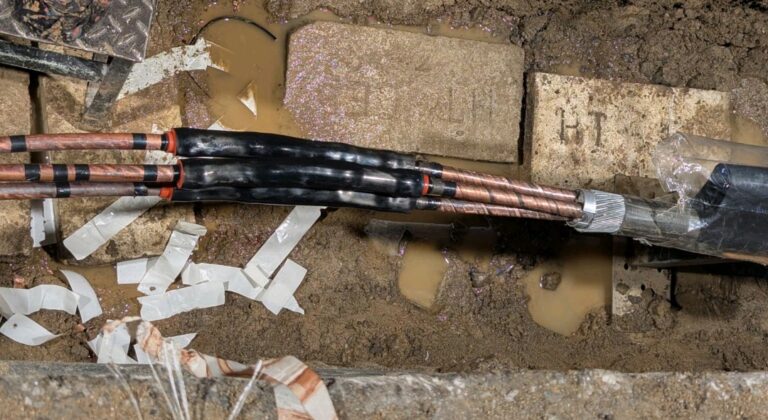Why HVDC is preferred over HVAC in Offshore wind farms: –
1. Reduced Power Losses Over Long Distances
– In an HVAC transmission system, capacitive charging currents increase with distance, causing significant power losses and requiring larger and more complex cable designs for effective power transfer.
– HVDC transmission does not experience these charging currents and associated losses, making it far more efficient over long distances (typically beyond 50-100 km). This efficiency enables more power to be delivered to the onshore grid from the offshore wind farm.
2. Reduced Number of Cables and Cost Efficiency
– HVDC systems can transmit the same amount of power as HVAC but with fewer cables because they require only two conductors (positive and negative) compared to the three conductors required for a three-phase AC system.
– Fewer cables translate to lower installation and material costs, which are especially beneficial for offshore projects, where cable laying is complex and expensive.
3. No Reactive Power Compensation Required
– HVAC systems experience reactive power losses due to the inductive and capacitive properties of the cables, which require reactive power compensation equipment to maintain voltage levels and efficient transmission.
– HVDC transmission does not need reactive power compensation, significantly simplifying the offshore substation infrastructure and reducing overall system costs.
4. Better Stability and Control Over Power Flow
– HVDC converters allow for precise control of power flow, enabling effective regulation of power injected into the onshore grid, which can help stabilize the grid and improve reliability.
– This controllability is particularly advantageous for offshore wind farms, as it allows for rapid adjustments in response to changing wind conditions or grid requirements.
5. Lower Environmental and Visual Impact
– By using fewer cables and eliminating the need for large onshore substations for reactive power compensation, HVDC systems can reduce the environmental footprint and visual impact of the onshore landing point.
6. Compatibility with Weak and Remote Grids
– Offshore wind farms are often connected to weak or remote grids, which can struggle to support the reactive power demands and voltage stability required by HVAC systems. – HVDC transmission, particularly with Voltage Source Converters (VSC-HVDC), can connect reliably to these weak grids, providing better stability and support.
7. Increased Reliability in Harsh Offshore Environments
– The reliability of HVDC cables tends to be higher in the offshore environment due to the lower complexity and reduced wear compared to HVAC cables.
– Offshore installations are often challenging and costly to maintain, so the enhanced durability and lower maintenance requirements of HVDC can offer long-term operational benefits.
𝙸𝚗𝚌𝚕𝚞𝚍𝚒𝚗𝚐 𝚊𝚋𝚘𝚟𝚎 𝚊𝚕𝚕 𝚝𝚑𝚎 𝚙𝚘𝚒𝚗𝚝𝚜 , 𝚙𝚛𝚘𝚓𝚎𝚌𝚝 𝚎𝚌𝚘𝚗𝚖𝚒𝚌𝚊𝚕 𝚟𝚊𝚕𝚞𝚊𝚝𝚒𝚘𝚗 𝚠𝚒𝚕𝚕 𝚋𝚎 𝚌𝚊𝚕𝚌𝚞𝚕𝚊𝚝𝚎 𝚠𝚒𝚝𝚑 𝚋𝚊𝚜𝚎𝚍 𝚝𝚑𝚎 𝚋𝚛𝚎𝚊𝚔 𝚎𝚟𝚎𝚗 𝚌𝚘𝚜𝚝 𝚠𝚒𝚕𝚕 𝚋𝚎 𝚊𝚏𝚝𝚎𝚛 600𝙺𝙼 𝚖𝚘𝚛𝚎 𝚝𝚑𝚎𝚗 𝚠𝚎 𝚐𝚘 𝚠𝚒𝚝𝚑 𝙷𝚅𝙳𝙲 𝚝𝚛𝚊𝚗𝚜𝚖𝚒𝚜𝚜𝚒𝚘𝚗 𝚜𝚢𝚜𝚝𝚎𝚖 𝚘𝚟𝚎𝚛 𝙷𝚅𝙰𝙲

